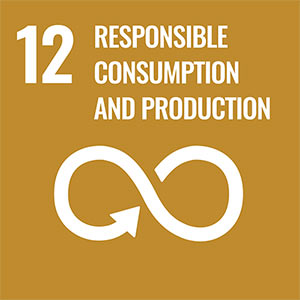MSc Interactive Media Technology
The master's programme in Interactive Media Technology provides skills and knowledge in designing, developing and evaluating interactive products and media. You will explore topics related to human-computer interaction, user experience, and sonic and visual media. We encourage students to work on projects that matter to them and respond to societal challenges. Graduates are experts in industry and academia, and some start their own companies.

Interactive Media Technology at KTH
Interactive Media Technology is fundamental to almost all of our experiences in the world. We use interactive media technology to support play, create and maintain social relationships, express ourselves, and coordinate and complete work tasks.
This master's programme equips you with the necessary skills and knowledge to participate in this digital economy. It emphasises developing future designers and engineers in theories, processes, and techniques central to designing, developing, and evaluating interactive media technologies within society. You will obtain the knowledge and skills to respond to the crucial challenges facing our future society.
The programme teaches knowledge and skills from computer science, media technology, human-computer interaction and interaction design. You will take mandatory courses in research methods, foundations in media technology and interaction design, and human perception. These courses provide a broad base of knowledge and skills that you can then deepen by focusing on, for example, user experience, sound and music computing, interaction design, or user-centred software development.
Teaching methods vary across the programme, but there is a strong emphasis on developing and refining practical skills through project work. Courses have strong connections to research to help you prepare for the future of interactive media technology in society.
The programme collaborates with the industry through study visits, guest lectures, and dissertation projects. Recent industrial collaborators in our teaching include Spotify, Scania, Google and Epic Games.
Throughout the programme, you develop a toolbox of methods to support you in designing, developing and evaluating interactive media technologies in all settings. You gain expertise in theoretical perspectives that can inform how you shape interactive media technology and learn critical perspectives that allow you to ask the right questions at the right time to ensure that your work positively impacts the world around you.
Studying this programme at KTH will put you in a unique position. You will have developed excellent technical and design skills while becoming proficient in applying critical perspectives on technology development and use. KTH is one of Europe's best venues for interaction design, and sound and computing research. Studying in this programme allows you to learn from and interact with these research leaders.
This is a two year programme (120 ECTS credits) given in English. Graduates are awarded the degree of Master of Science. The programme is given mainly at KTH Campus in Stockholm by the School of Electrical Engineering and Computer Science (at KTH).

Courses in the programme
The courses in the programme cover topics such as Interaction design, physical computing, sound and music computing, graphics and visualisation, social and collaborative computing, multimodal interaction, haptic and tangible interaction, evaluation of interactive systems, sustainable and critical approaches to technology development.
Courses in the programme Interactive Media Technology
Future and career
After graduation, you can pursue a career as a developer, technical lead, interaction designer, UX engineer, product or project manager in IT and media industries. You can also pursue a career in industrial research or continue your studies toward a doctoral degree. Some recent graduates have pursued doctoral studies internationally at Université Paris-Saclay and IT University of Copenhagen, or in Sweden at Stockholm University and Umeå University.
Former students have found work at companies such as Spotify, DICE, Skype, Netlight Consulting, Tobii, and Voddler. Among our graduates, we also have several founders of companies within the media and IT sector, including Prezi and SoundCloud, and several successful consultancy firms such as Prototyp and Ocean Observations.
Sustainable development
Graduates from KTH have the knowledge and tools for moving society in a more sustainable direction, as sustainable development is an integral part of all programmes. The three key sustainable development goals addressed by the master's programme in Interactive Media Technology are:



The programme has a focus on knowledge and skills relevant to these goals. This strong focus is the result of our faculty, who lead research that aligns with these topics.
To respond to goal 12, all students (who have yet to learn about sustainability in their previous education) must take a course on Sustainability and media technology. If you desire, you can deepen this knowledge through, for example, the course Sustainable ICT in Practice, which provides you with relevant theory, data and methods to carefully and critically consider the environmental impact of interactive media technologies in society. Through courses such as Information visualisation, you learn how to create visualisations that build awareness and trigger behaviour change through, for instance, visualising complex data related to CO2 emissions, energy usage or food waste, and how to design systems adapted to people with physical or cognitive impairments.
In response to Goal 3, we offer students courses such as IT design for disabled people, which helps you develop expertise in taking accessibility into account when designing interactive technologies. Courses like Physical interaction design allow you to think about the whole body as a starting point for interaction with technology. These courses enable the student to reimagine and redesign interactive technologies that help everyone in society lead a better life.
Goal 5 is examined from several perspectives in the course User experience design and evaluation. In this course, you are introduced to theory and perspectives that help to demonstrate the dangers of designing technologies and services without taking into account the full diversity of users. You also examine the opportunities for innovation that come when viewing user experience technologies from new perspectives. You will leave this course with the capabilities to critically assess the impact of user experience technologies on populations and design and develop innovative new solutions that are more inclusive and empowering.
Faculty and research
The programme is given by the School of Electrical Engineering and Computer Science. The school conducts research and education in electrical engineering, computer science, and information and communication technology. Faculty involved in the programme mainly belong to the Division of Media Technology and Interaction Design or the Division of Computational Science and Technology and work on a broad range of research topics.
Professor Madeline Balaam is the programme director of the programme. She says: “Our programme gives masters’ students a strong foundation in the skills and knowledge necessary to produce the next generation of interactive media technologies. Not only this, but our students graduate with a strong set of critical skills that mean they are well prepared to face the challenges that tomorrow will bring."
The programme is hosted by Media Technology and Interaction Design division. It is a lively research community which research expertise across a number of topics, including:
- Interaction Design
- Sustainability
- Sound and Music Computing
- Technology Enhanced Learning
- SPACE - Social, Physical and Cultural Environments
- Creative Media Technology
- Media Lab
Faculty involved in the programme
Facilities
The department has access to several research and teaching facilities where students and researchers can work on both work-related and private projects.
The Division of Media Technology and Interaction Design manages four research environments: Multisensory Studio, MIDDLA, Haptic Lab and KTH's R1 (reactor hall) .
The Division of Computational Science and Technology manages three large research environments: PDC Center for High Performance Computing, SciLifeLab and the VIC Visualization Studio . The VIC studio in particular is used by both researchers and students within the programme.






